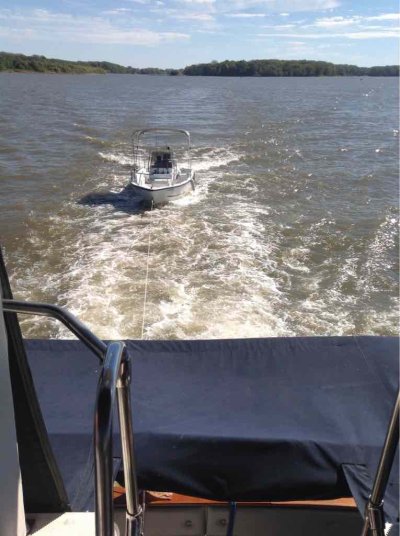Mainship400
Veteran Member
Curious if there are other trawlers out there that tow a skiff all the time while cruising the Great Loop or long distances like the ICW? I need to replace the PVC dinghy which came with the boat and deteriorated. I would prefer a hard 15'-17" CC like a Key West, but concerned about the hassles of maneuvering into new marinas, going through locks, etc. What have been your experiences? Would you stick with the tow behind or go back to a smaller hypalon RIB that can be hung off a davit on the transom?
Last edited:







